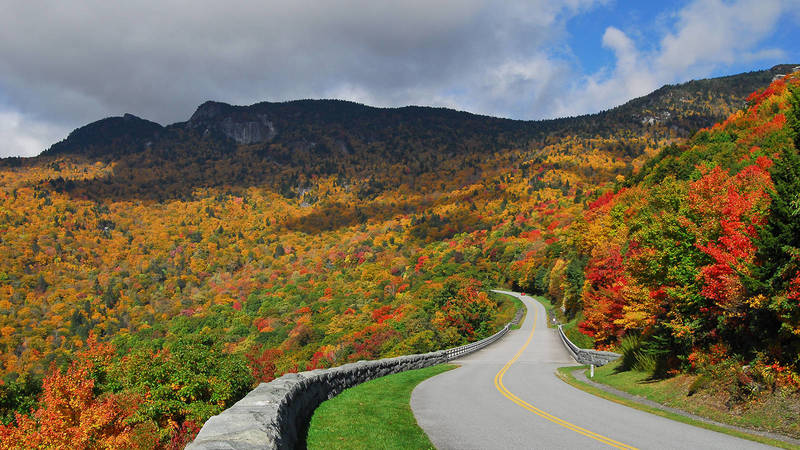The enormous federal funding bill that passed Congress last month will provide much-needed relief for Americans. It also includes significant benefits for our national parks and public lands.
In the final weeks of 2020, Congress passed, and the president eventually signed, a long-delayed bill with coronavirus relief for millions of Americans and funding for the federal government. This was welcome news for a nation struggling with record-high COVID-19 case numbers, devastating unemployment rates, and widespread housing and homelessness worries.
The behemoth 5,600-page bill had many other provisions in it, including significant victories for parks. Although this bill includes some measures NPCA opposes — including $1.4 billion for border wall construction, which is already devastating parks and wildlife in the Southwest — it contains many priorities that NPCA and our allies and supporters have fought hard to achieve.
Here are seven major highlights from the legislation, which passed with broad bipartisan majorities.
1. Strong agency funding.
The funding for the Department of the Interior includes a 4.3% increase for the operation of national parks, a sizable investment that can help the National Park Service address significant understaffing issues. The bill also includes increases in funding for historic preservation, public lands infrastructure, and Environmental Protection Agency programs that support clean water in the Great Lakes, Chesapeake Bay, Everglades and other areas.
2. Clearly outlined preservation and maintenance priorities.
In August, Congress passed the Great American Outdoors Act, a historic bill that authorized billions of dollars to fund critical park maintenance needs and conserve vulnerable lands — but elected officials needed to follow through on what specific projects would receive funding. This bill provides clarity, outlining a robust first list of conservation projects that will protect more than 30 parks from incompatible residential and commercial development, as well as 50 critical maintenance projects that will benefit dozens of parks across the country.
3. Significant provisions to fight climate change.
Climate change is the worst threat parks face, and this bill includes billions of dollars in funding to phase out heat-trapping chemicals known as hydrofluorocarbons, maintain tax incentives for renewable energy, and fund additional energy-efficiency projects, among other things. It is an imperfect collection of measures, but some of this funding will provide enormous investments in a better future for people and parks.
4. A significant park expansion and a park redesignation.
The bill expands the boundary of Saguaro National Park in Arizona to include several dozen parcels of land in both units of the park, totaling 1,152 acres. Some parcels will protect trailhead access and views, others will protect rivers and wildlife habitat, and one parcel in particular will prevent a beautiful hiking trail from being developed into a two-mile-long private driveway. The bill will also redesignate New River Gorge National River in West Virginia as New River Gorge National Park and Preserve — a change that could bring significant tourism benefits to the region.
5. Protection for Chaco Culture National Historical Park in New Mexico.
The Bureau of Land Management has auctioned almost 24.7 million acres of public land for oil and gas development over the last four years, some of it near sensitive national park lands. Chaco Culture is one of a number of parks at particular risk from irresponsible development on its borders. This bill prevents the bureau from offering or processing any such oil and gas leasing in a “protection zone” of roughly 10 miles around the border of Chaco Culture while Native American tribes conduct an ethnographic study to identify traditional cultural properties and sacred sites in the region, including significant landscape features. The bill also designates additional funding for the study.
6. Planning more resilient landscapes.
The bill includes key legislation known as the Water Resources Development Act that authorizes U.S. Army Corps of Engineers projects, including significant work affecting park lands, such as Everglades restoration. The bill removes barriers to restoring and protecting natural features in these projects, making it easier to prioritize sand dunes, wetlands, barrier islands and coastal forests over human-built projects such as levies, jetties and bulkheads, which will have positive effects on parks. The bill prioritizes ways to protect economically disadvantaged communities from flooding, hurricanes and intense storms. It also supports restoration in important park landscapes such as the Great Lakes, New York-New Jersey Harbor and Rio Grande.
7. Settling water rights in Montana.
The legislation contains a bill supported by the Confederated Salish and Kootenai Tribes that ratified a $2 billion compact in Montana to settle long-standing tribal water rights and provide farmers and ranchers the security of future rights. The bill will also return management of the National Bison Range, a federal wildlife refuge for bison, to tribal authority.
As many suffer through a difficult winter season, it is heartening to know that economic aid is on its way, along with so many positive developments for the places we love and depend on.
Stay On Top of News
Our email newsletter shares the latest on parks.
About the author
-
 John Garder Senior Director of Budget & Appropriations, Government Affairs
John Garder Senior Director of Budget & Appropriations, Government AffairsJohn Garder is Senior Director of Budget & Appropriations at NPCA. He is a budget analyst and researcher who advocates for more adequate funding for national parks to diverse audiences, including Congress, the White House, and the Department of the Interior.
-
Issues


